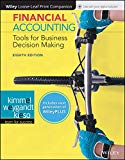
Financial Accounting: Tools for Business Decision Making, 8e WileyPLUS (next generation) + Loose-leaf
8th Edition
ISBN: 9781119491057
Author: Paul D. Kimmel, Jerry J. Weygandt, Donald E. Kieso
Publisher: Wiley (WileyPLUS Products)
expand_more
expand_more
format_list_bulleted
Concept explainers
Question
Chapter 11, Problem 11.3BE
To determine
No-par common stock: The common stock that is issued at its fair market value is known as no-par common stock. Common stocks are the ordinary shares that a corporation issues to the investors in order to raise funds. In return, the investors receive a share of profit from the profits earned by the corporation.
To Journalize: the issuance of shares for Incorporation F.
Expert Solution & Answer
Want to see the full answer?
Check out a sample textbook solution
Students have asked these similar questions
On December 31, Year 8, Suzi McDowell wants to have $60,000. She plans to make 6 deposits in a fund to provide this amount. Interest compounds annually at 12%.
Required:
Compute the equal annual amounts that Suzi must deposit assuming that he makes the first deposit on:
December 31, Year 3
December 31, Year 2
Hello tutor please help me this question
correct answer please
Chapter 11 Solutions
Financial Accounting: Tools for Business Decision Making, 8e WileyPLUS (next generation) + Loose-leaf
Ch. 11 - Prob. 1QCh. 11 - Prob. 2QCh. 11 - Prob. 3QCh. 11 - Prob. 4QCh. 11 - Prob. 5QCh. 11 - Prob. 6QCh. 11 - Prob. 7QCh. 11 - Which is the boiler investmentcommon stock with a...Ch. 11 - Prob. 9QCh. 11 - Prob. 10Q
Ch. 11 - Prob. 11QCh. 11 - Prob. 12QCh. 11 - Indicate how each of these accounts should be...Ch. 11 - What three conditions must be met before a cash...Ch. 11 - Prob. 15QCh. 11 - Prob. 16QCh. 11 - Prob. 17QCh. 11 - Prob. 18QCh. 11 - Prob. 19QCh. 11 - Prob. 20QCh. 11 - Prob. 21QCh. 11 - Prob. 22QCh. 11 - Prob. 23QCh. 11 - Prob. 24QCh. 11 - Prob. 25QCh. 11 - Prob. 26QCh. 11 - Prob. 11.1BECh. 11 - Prob. 11.2BECh. 11 - Prob. 11.3BECh. 11 - Prob. 11.4BECh. 11 - Prob. 11.5BECh. 11 - Prob. 11.6BECh. 11 - Prob. 11.7BECh. 11 - Prob. 11.8BECh. 11 - Prob. 11.9BECh. 11 - Prob. 11.10BECh. 11 - Prob. 11.11BECh. 11 - Prob. 11.12BECh. 11 - Prob. 11.1DIECh. 11 - Prob. 11.2ADIECh. 11 - Prob. 11.2BDIECh. 11 - Prob. 11.3ADIECh. 11 - Prob. 11.3BDIECh. 11 - Prob. 11.4ADIECh. 11 - Prob. 11.4BDIECh. 11 - Prob. 11.1ECh. 11 - Prob. 11.2ECh. 11 - Prob. 11.3ECh. 11 - Prob. 11.4ECh. 11 - Prob. 11.5ECh. 11 - Prob. 11.6ECh. 11 - Prob. 11.7ECh. 11 - Prob. 11.8ECh. 11 - Prob. 11.9ECh. 11 - Prob. 11.10ECh. 11 - Prob. 11.11ECh. 11 - Prob. 11.12ECh. 11 - Prob. 11.13ECh. 11 - Prob. 11.14ECh. 11 - Prob. 11.15ECh. 11 - Prob. 11.16ECh. 11 - Prob. 11.1APCh. 11 - Prob. 11.2APCh. 11 - Prob. 11.3APCh. 11 - Prob. 11.4APCh. 11 - Prob. 11.5APCh. 11 - Prob. 11.6APCh. 11 - Prob. 11.7APCh. 11 - Prob. 11.8APCh. 11 - Prob. 11.1CACRCh. 11 - Prob. 11.2CACRCh. 11 - Prob. 11.1EYCTCh. 11 - Prob. 11.2EYCTCh. 11 - Prob. 11.3EYCTCh. 11 - Prob. 11.4EYCTCh. 11 - Prob. 11.5EYCTCh. 11 - DECISION MAKING ACROSS THE ORGANIZATION During a...Ch. 11 - Prob. 11.7EYCTCh. 11 - Prob. 11.8EYCTCh. 11 - Prob. 11.9EYCTCh. 11 - Prob. 11.12EYCTCh. 11 - Prob. 11.1IFRSCh. 11 - Prob. 11.2IFRSCh. 11 - Prob. 11.3IFRSCh. 11 - Prob. 11.4IFRS
Knowledge Booster
Learn more about
Need a deep-dive on the concept behind this application? Look no further. Learn more about this topic, accounting and related others by exploring similar questions and additional content below.Similar questions
- hi expert please help mearrow_forwardE14.10 (LO 1) (Information Related to Various Bond Issues) Pawnee Inc. has issued three types of debt on January 1, 2022, the start of the company's fiscal year. a. $10 million, 10-year, 13% unsecured bonds, interest payable quarterly. Bonds were priced to yield 12%. b. $25 million par of 10-year, zero-coupon bonds at a price to yield 12% per year. c. $15 million, 10-year, 10% mortgage bonds, interest payable annually to yield 12%. Instructions Prepare a schedule that identifies the following items for each bond: (1) maturity value, (2) number of interest periods over life of bond, (3) stated rate per each interest period, (4) effective-interest rate per each interest period, (5) payment amount per period, and (6) present value of bonds at date of issue. Hint: you don't need to prepare the amortization schedule to answer this question. Just a simple table is enough.arrow_forwardNeed correct answer of this question general Accountingarrow_forward
arrow_back_ios
SEE MORE QUESTIONS
arrow_forward_ios
Recommended textbooks for you
- Principles of Accounting Volume 1AccountingISBN:9781947172685Author:OpenStaxPublisher:OpenStax College

Principles of Accounting Volume 1
Accounting
ISBN:9781947172685
Author:OpenStax
Publisher:OpenStax College
Stockholders Equity: How to Calculate?; Author: Accounting University;https://www.youtube.com/watch?v=2jZk1T5GIlw;License: Standard Youtube License